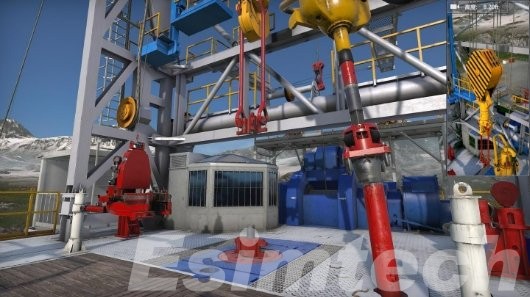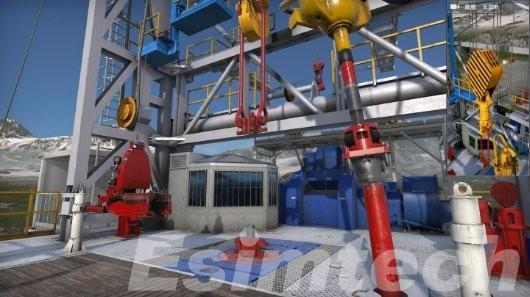1. The construction of a model of the geology of the earthIn the beginning, you will need to create a geological model by making use of the data you gleaned from geological exploration and logging. This will require you to use the information at your disposal. This step encompasses the process of determining a variety of aspects, some of which include formation characteristics, rock properties, formation stratification, well trajectory, and other aspects. The geological models will act as the foundation for the simulation's foundational component in its role as the basis.
2. Determining the parameters for the drilling process will be tasked with determining the drilling parameters based on the actual drilling scenario as well as the plan. These parameters include the kind of bit being used, the kind of drilling and well control simulators fluid being used, the rate at which one is drilling, the amount of force being applied, and so on. These parameters are going to be utilized at some point during the simulation of the drilling and well control simulators process that will take place.
4. Visual display The simulator will also present the results of the simulation in a manner that is of a three-dimensional nature when it comes to the visual display. Engineers are able to observe simulated boreholes, formation conditions, bit movement, and a wide variety of other aspects, as well as monitor parameter changes in real-time when they use a graphical user interface that is simple to use. There is a wide range of other aspects besides those mentioned here that can be considered.

5. Modeling of the well-control systemIn addition to the drilling process, three-dimensional simulators can simulate the various steps involved in well control. Bottom hole pressure management, gas control, and leakage are all processes that fall under this category. It does this by first simulating well-control operations based on the input parameters and scenarios, and then providing relevant visual results and predictions based on those simulations.
In 3D drilling and well control simulation, what are some of the most important features and benefits that it offers, and what are some of those features that it offers?
The 3D drilling and well control simulation offers the following important characteristics and advantages, which are listed in the following order:
1. Drilling plan optimization: Engineers are able to simulate various drilling scenarios and parameter settings, which enables them to evaluate and compare the effects of a variety of different drilling scenarios. They are able to optimize their drilling plans as a direct consequence of this fact, which, in turn, leads to an increase in both the drilling efficiency and the cost effectiveness of the operation.
2. Risk identification and management: The simulator can be of assistance to engineers in identifying potential risk factors, such as hole collapse, leakage, gas emission, etc., and in taking appropriate measures in advance for risk management to ensure the safety and reliability of drilling operations. This can help ensure that drilling operations are carried out in a manner that is both safe and reliable. It is necessary to do this in order to guarantee that the drilling operations will be carried out in a manner that is in accordance with the standards of the industry. When this factor is taken into account, drilling operations are capable of being carried out in a manner that is not only risk-free but also dependable.
3. Real-time monitoring and early warning: the simulator has the capability to monitor drilling parameters and the status of the borehole in real time. Additionally, the simulator has an early warning function that can detect abnormal situations in a timely manner so that precautions can be taken to prevent accidents from occurring.
5. Personnel training and technical support: Drilling simulators can be used as training tools to help newly hired drilling engineers become familiar with drilling operations and well control techniques. In addition to this, it is able to provide technical support, which includes the provision of guidance and recommendations in the carrying out of operational tasks.
6. The process of data recording and analysisDuring the drilling and well control simulators process, the simulator has the capability to record and examine a wide variety of data. The parameters of the drilling fluid cycle, the borehole displacement, and other such things are included in these data. This is done to provide data support for review and analysis, as well as to assist in making improvements to future drilling plans. Moreover, this is done to assist in the development of new drilling techniques. In addition to that, we do this so that we can contribute to the enhancement of the current drilling plans.
In conclusion, 3D drilling and well control simulators provide a reliable tool for drilling engineering and help to promote the efficiency, safety, and sustainability of operations. In addition, these simulators can help reduce the environmental impact of drilling. Optimized drilling planning, risk management, real-time monitoring, visual presentation, personnel training, and data analysis are all included in these simulators.



